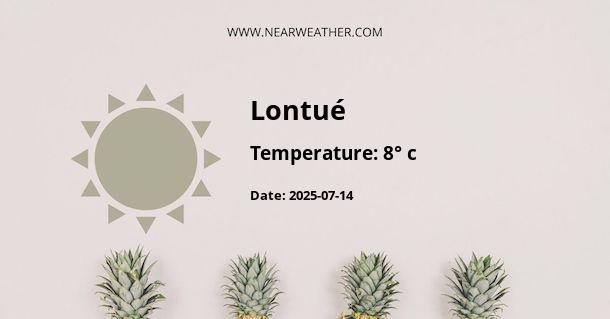Lontué, Chile: A Comprehensive Guide to its Climate and Weather Year Round
Nestled in the Maule Region of Chile, Lontué is a beautiful and culturally rich area known for its stunning landscapes and diverse climate. Understanding the weather patterns and climate of Lontué is crucial for residents, businesses, and tourists alike. In this comprehensive guide, we will explore the climate and weather of Lontué throughout the year, providing valuable insights for anyone interested in this fascinating region.
Climate Overview
Lontué experiences a Mediterranean climate, which is characterized by mild, wet winters and hot, dry summers. The presence of the Andes Mountains to the east and the Pacific Ocean to the west greatly influences the region's climate, resulting in distinct seasonal variations in temperature and precipitation.
Annual Weather Summary
Let's take a closer look at the weather patterns in Lontué throughout the year:
| Month | High (°C) | Low (°C) | Precipitation (mm) |
|---|---|---|---|
| January | 30 | 12 | 5 |
| February | 29 | 12 | 3 |
| March | 27 | 10 | 15 |
| April | 23 | 7 | 40 |
| May | 19 | 5 | 90 |
| June | 16 | 3 | 143 |
| July | 16 | 3 | 120 |
| August | 17 | 4 | 87 |
| September | 20 | 6 | 55 |
| October | 24 | 8 | 30 |
| November | 27 | 9 | 20 |
| December | 29 | 11 | 10 |
From the table above, we can see that Lontué experiences a significant variation in temperature and precipitation throughout the year. The summer months from December to February are characterized by high temperatures and minimal precipitation, making it an ideal time for outdoor activities and vineyard visits. In contrast, the winter months from June to August bring cooler temperatures and higher levels of precipitation, creating a lush and green landscape throughout the region.
Precipitation Patterns
The precipitation patterns in Lontué play a crucial role in shaping the region's landscape and agricultural activities. The winter months receive the bulk of the annual precipitation, providing essential moisture for the flourishing vineyards and agricultural fields. This seasonal distribution of precipitation is vital for sustaining the diverse ecosystem of the area.
Microclimates in Lontué
Due to its varying topography and proximity to the Andes Mountains and the coast, Lontué features microclimates that offer distinct conditions for agricultural practices. The valley floors benefit from fertile soil and favorable temperatures, while higher elevations experience cooler temperatures, influencing the cultivation of specific crops and the unique flavors of the region's produce.
Ideal Times to Visit Lontué
For travelers seeking to explore the natural beauty and rich cultural heritage of Lontué, the ideal times to visit would be during the spring (September to November) and early summer (December to February). During this period, visitors can enjoy the pleasant weather, blooming landscapes, and various local festivals and events that showcase the region's traditions and bountiful harvests.
Conclusion
In conclusion, Lontué, Chile, offers a captivating blend of natural wonders, diverse microclimates, and a rich cultural tapestry. Understanding the climate and weather patterns throughout the year is essential for residents, businesses, and tourists wishing to fully appreciate the unique characteristics of this enchanting region. Whether it's the warm, dry summers or the cool, wet winters, Lontué's climate plays a pivotal role in shaping the lifestyle, agricultural practices, and visitor experiences in this remarkable corner of the Maule Region.
A - Lontué's Latitude is -35.066669 & Longitude is -71.266670.
A - Weather in Lontué is 12° today.
A - Climate Conditions in Lontué shows clear sky today.
A - Humidity in Lontué is 87% today.
A - Wind speed in Lontué is 5.54 km/h, flowing at 150° wind direction. today.
